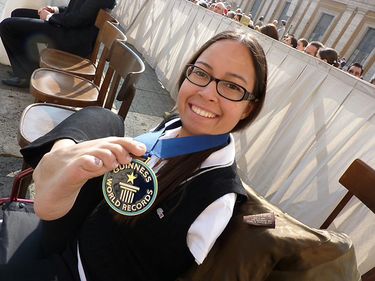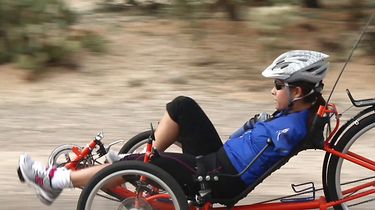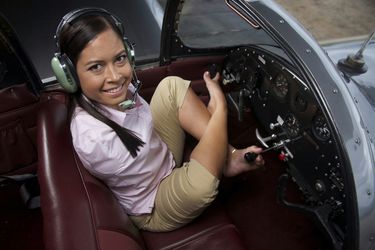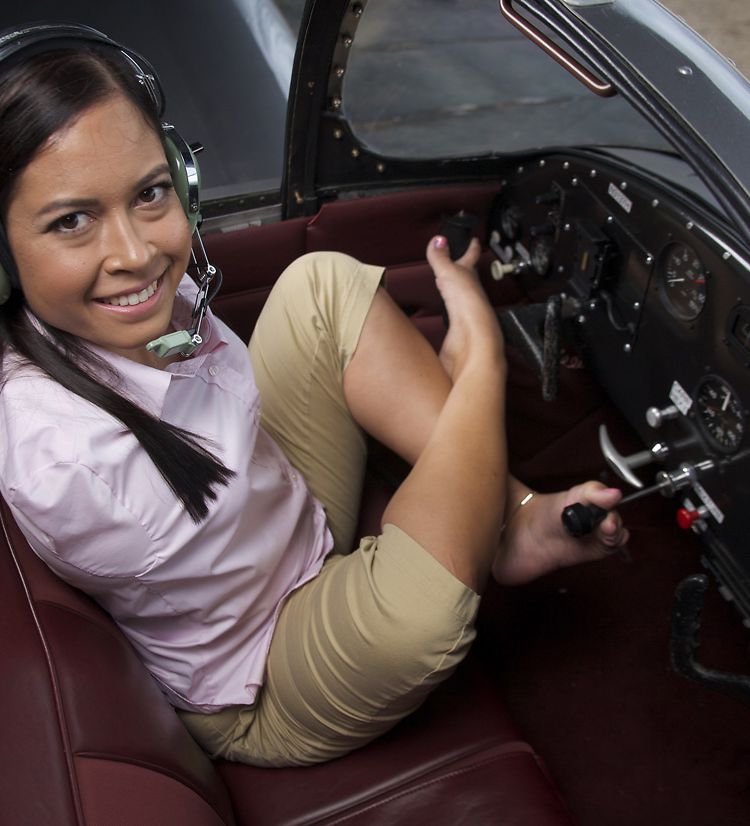Pioneering spirit and relentless tenacity
We celebrate the UN International Day of Persons with Disabilities with Jessica Cox, an aviator with a pioneering spirit and relentless tenacity. Although born without arms as the result of a birth defect, she has never allowed that to be a limiting factor. She travels the world encouraging people to eliminate the words I can’t from their vocabulary.

Mind over matter
At two years old, she would play with toys using her feet. At the age of 14 she was already a Taekwondo black belt, mimicking the movements that others made with their arms, and at 25 she became the first person in history to be a certified pilot using only her legs to fly the plane. That feat landed her in the Guinness Book of World Records.
A psychology graduate and Taekwondo black belt, Jessica Cox has turned the tables on her so-called “disability”, allowing it to enable her as a motivational speaker and advocate in the US and beyond.
She shows people how to achieve goals through self-confidence and creativity. His motto: Think Outside the Shoe. This year, a documentary about her life title Right Footed has been released after winning numerous awards at film festivals around the world.

I’ve read that you don’t like using the word ‘disabled’...
Jessica Cox: I think it is a deceptive word. Both ‘handicapped’ and ‘disabled’ are words that imply a lack of something. I prefer ‘differently-abled’. Basically, there are people who are just different, and have different ways of doing things. One example is myself. I was born without arms, but I am not disabled. I can do everything with my feet, I just live in a different world from the one I call ‘the world of two hands.’ I can do almost everything with my feet including put in my contact lenses, typing on a keyboard – 25 words per minute - cooking, washing dishes, scuba diving, driving, applying my make-up... only for certain activities do I need help or special tools. Also, the limitations that I have always encountered have made me develop a lot of creativity and imagination to find suitable ways of doing things.
What gave you the idea to become a pilot?
JC: A friend of mine who is a pilot had a big influence on my decision. I had never flown in a single-engine aircraft before. In fact, I’d had a huge fear of commercial airplanes since I was a child. However, I persuaded myself that it was a great opportunity to overcome my fears. As Eleanor Roosevelt once said, you have to look fear in the face and walk right up to it. You have to confront your fears in order to overcome them.
I can imagine that during your three years of training, you had moments of doubt...
JC: The only prerequisite for getting a sport pilot’s certificate is that you have a driving license, which I already had. However, my problem was logistical. I needed a specific model – which I found in the Ercoupe 415C – with a spacious cabin, without pedals for the tail rudder, and with a throttle on the control panel at the right height for me.

How did you feel on that first flight?
JC: I remember that when I flew for the first time, images popped into my head of a game I played as a child, sitting in a sand pit and imagining that I was Superwoman flying over the top of the school, carrying my friends. There is no experience as powerful or that gives you such a feeling of independence as piloting an aircraft. For me, there is nothing else remotely like it!
Looking at the obstacles that you have had to overcome, where does your tremendous vital drive come from?
JC: It comes from realising how many people have helped me, and my need to give to others as well. A while ago, I realised that I had been blessed, and I noticed that the things I do help to inspire other people, so I said to myself, “Why not? Why not use the gift that I have to help others?” Also, I am very persistent and maybe I do have more energy than most people, which is what helps me. In my work, I teach people that there is always more than one way of accomplishing a task.
Is that why you decided to stop using your prosthetic limbs?
JC: I got rid of them when I was 14 years old. I decided to stop wearing them because they were just not me. I actually only wore them because everyone else used to tell me I had to.
In my case, I often find it incredibly tricky to multitask. I suppose this is because I am a man, or are there any tips you can give me?
JC: Doing things and completing any task is something that comes naturally to me. Just as naturally as it does to you, or maybe slightly more so (she laughs). My mother started placing toys at my feet when I was two, and now I can do everything with them, including using chopsticks. And I’ll continue to use them to tackle new challenges. Right now I’m looking for a new adventure. I’ve finished my first book and Right Footed has been released. If you have any ideas, let me know.
Given your progress, what about learning to pilot an A380 then?
JC: Who knows (laughing)? The first step in any venture is to set your mind on it.
Álvaro Friera
International Day of Persons with Disabilities
The theme for this year’s United Nations International Day of Persons with Disabilities is ‘Achieving 17 Goals for the Future We Want.’ This theme notes the recent adoption of the 17 Sustainable Development Goals (SDGs) and the role of these goals in building a more inclusive and equitable world for persons with disabilities.
